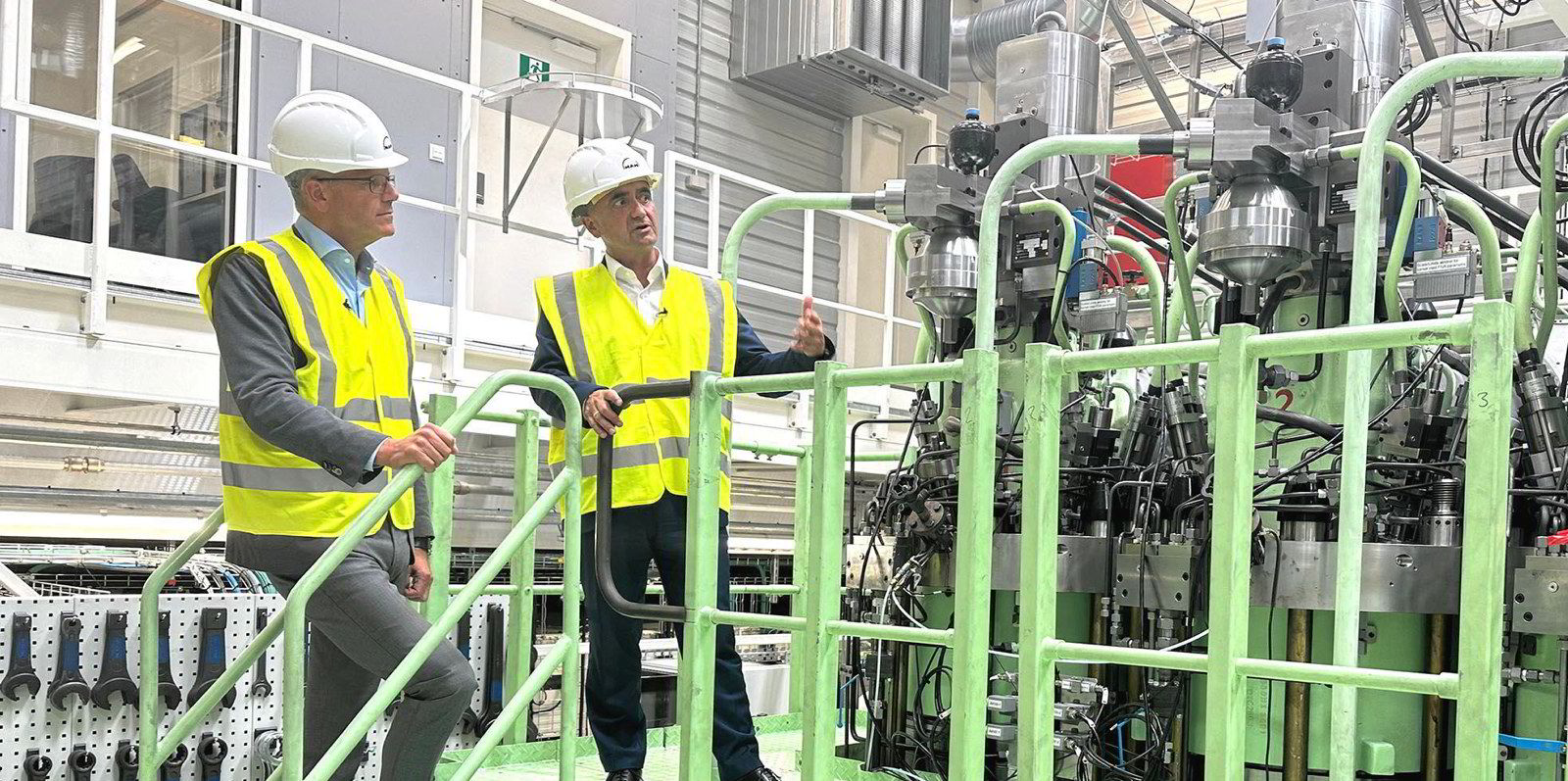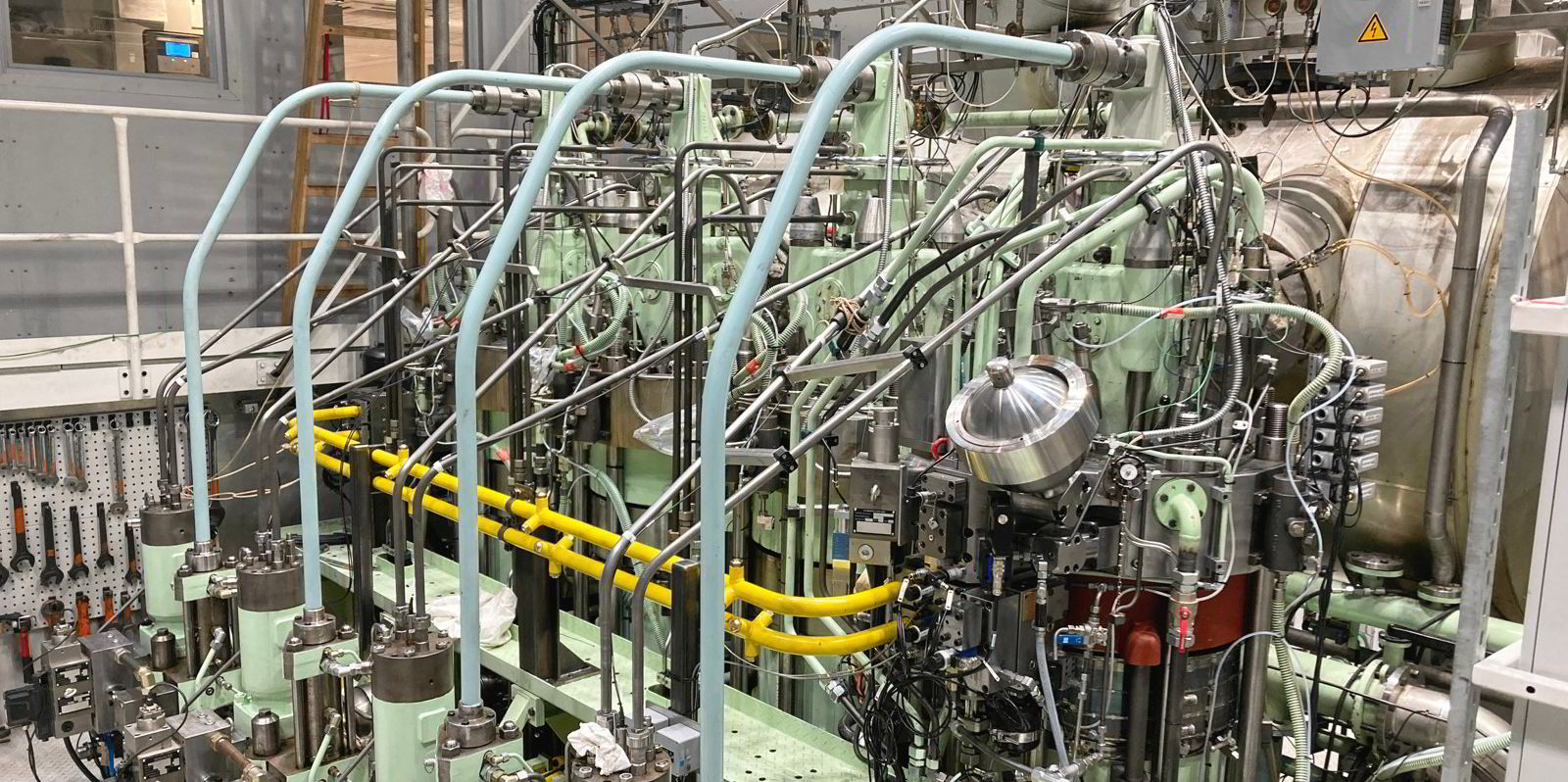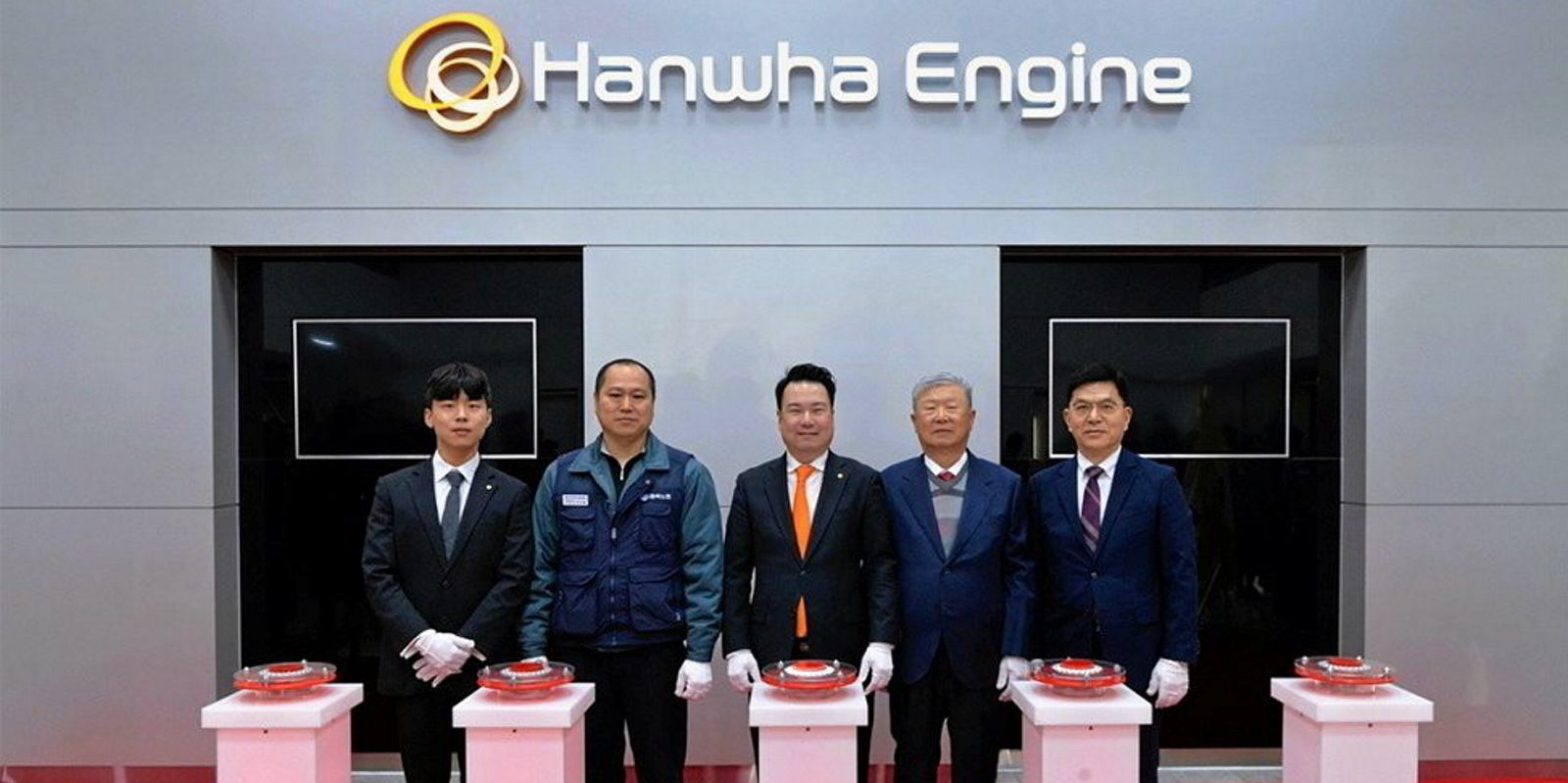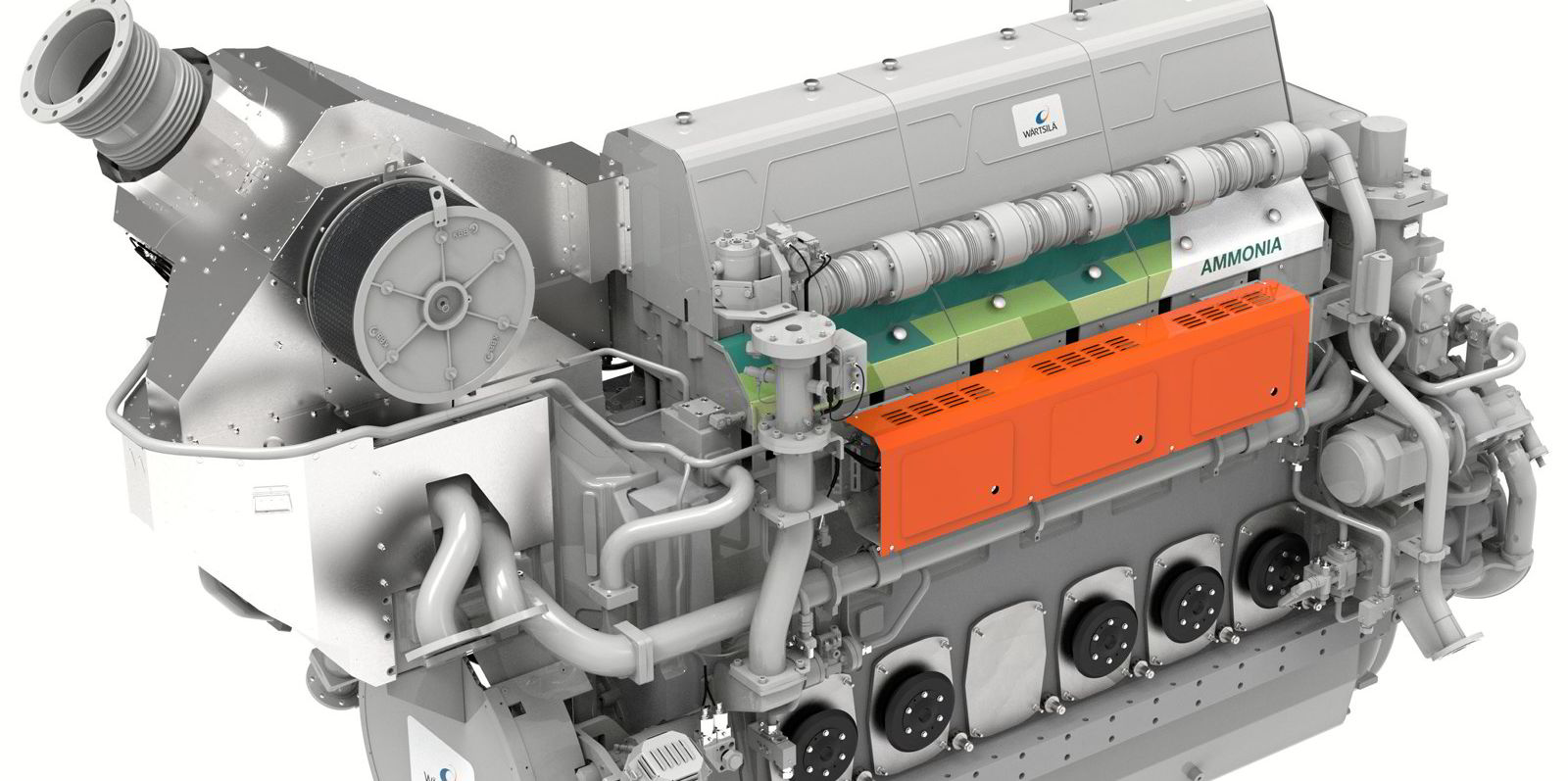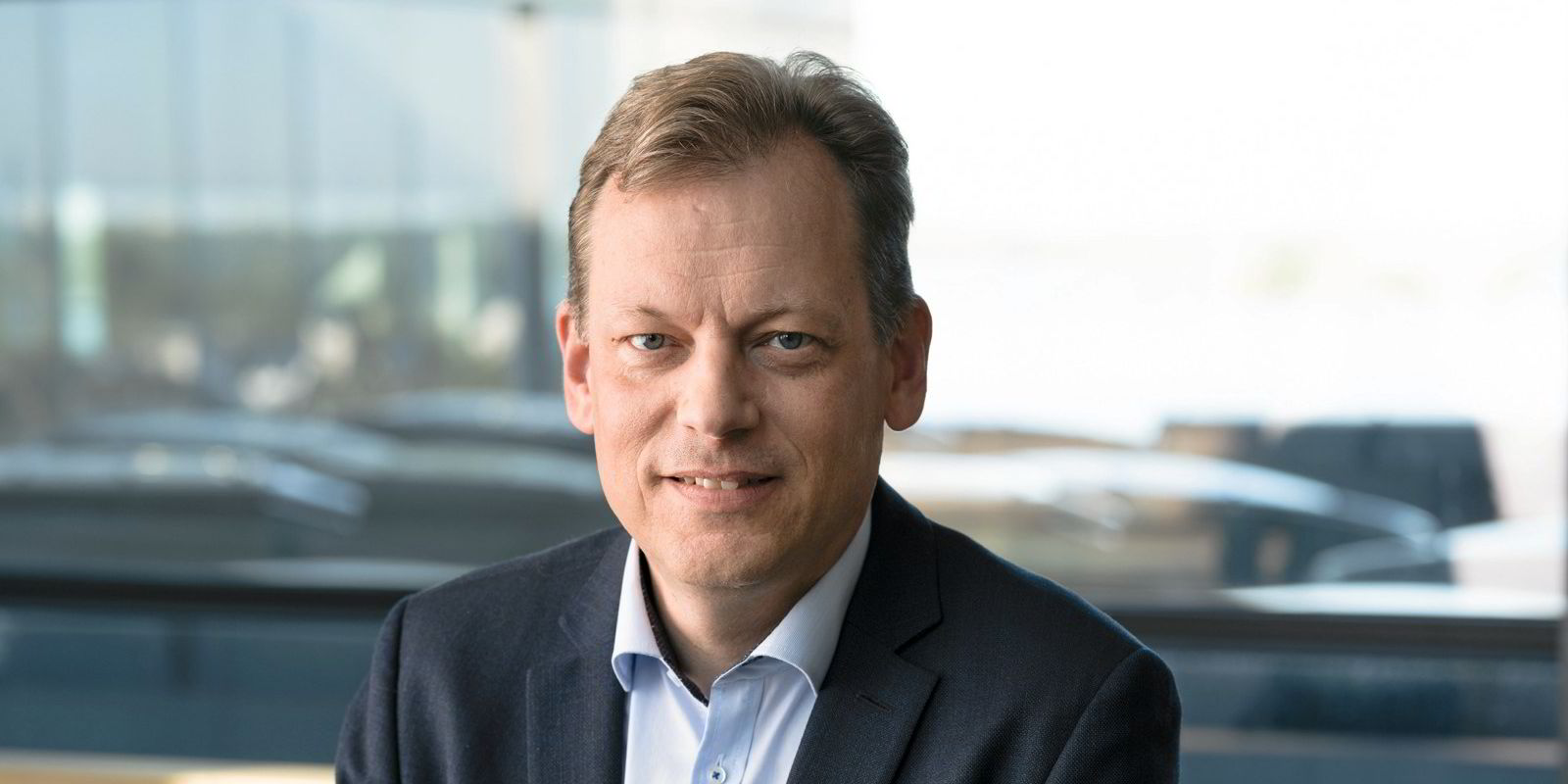Shipowners are making some bold claims about ammonia-fuelled newbuildings, but the reality is that the first dual-fuelled engines that can use the fuel are still being tested with pilots and are only due to be fitted in 2025.
The pressure is on engine designers, each taking a slightly different approach to tackling the design for a new fuel with huge decarbonisation potential but also presenting serious safety challenges.
MAN Energy Solutions’ Copenhagen-based engine division is advancing on two fronts.
Thomas Hansen, MAN ES head of two-stroke new sales and promotions, said the company’s test engine, which started tests on ammonia in July 2023, will continue to run on one cylinder until early summer. It will then be rebuilt so the whole engine can be run on ammonia from around August onwards.
But in parallel, Hansen revealed that MAN ES licensee Mitsui E&S Machinery in Japan is already building the first S60 ammonia engine at its Tamano Works, in Okayama Prefecture.
This first pilot engine is due to be installed on a Japanese-built newbuilding in 2025.
A G60-type ammonia engine will follow at licensee Hyundai. The company also has other projects in South Korea and China and is pursuing developments for 70-bore and 80-bore designs.
Hansen admitted that this approach to a new engine product is “quite unusual”.
MAN ES would normally launch a new engine product and test it for a few weeks. But he said ammonia’s toxicity means it is taking a “cautious market introduction approach” and the final engine design will not be fixed until closer to its delivery date.
“With this kind of fuel, we want to ensure that it will be a success,” Hansen said. “You cannot build it and have a strategy to fail fast and correct in service. It doesn’t cut it this time.
“We want to test the final product very thoroughly” before it is released for sale, he said.
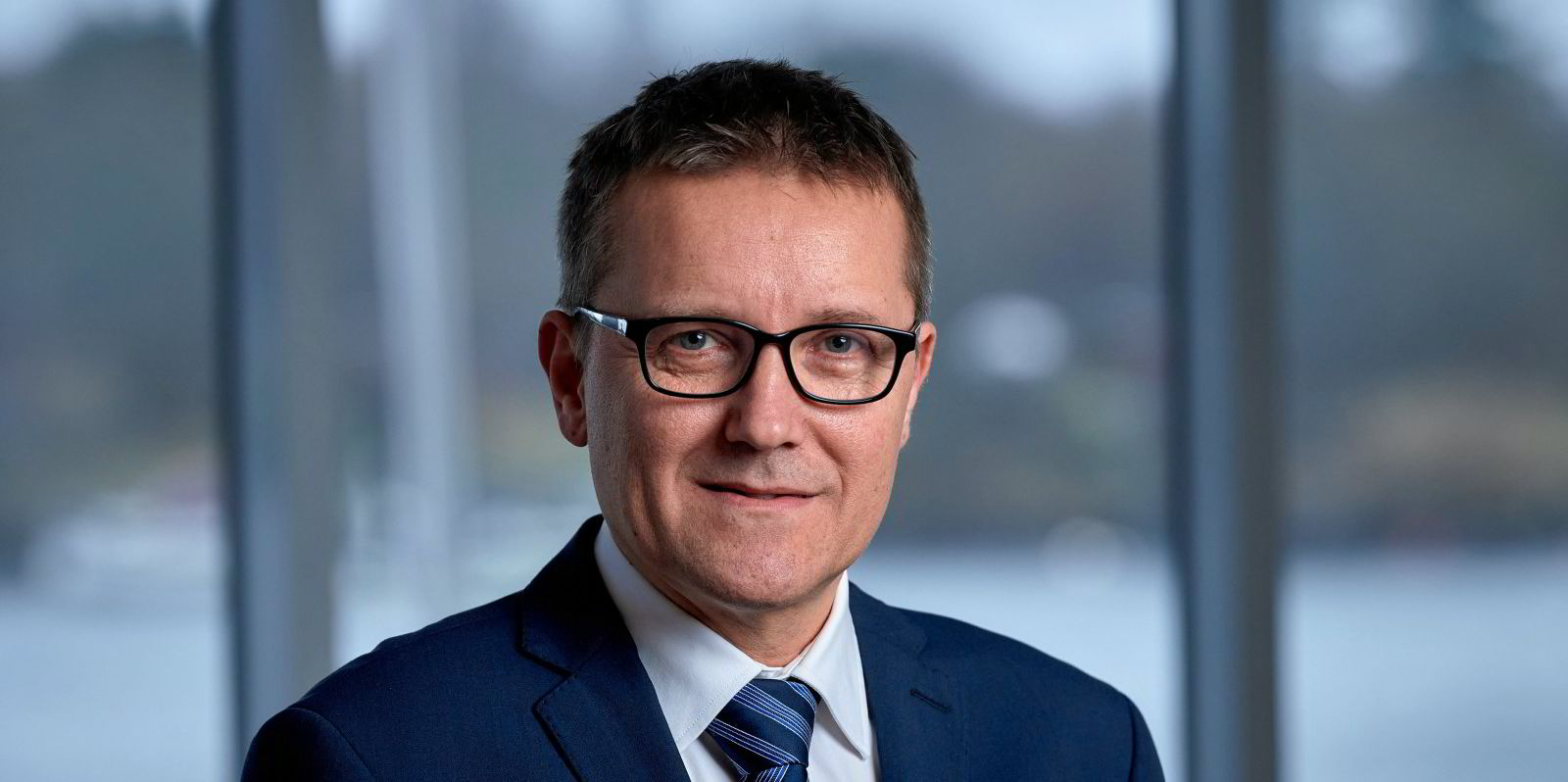
Hansen said MAN ES has now performed more than 200 individual tests on its test engine, simulating various conditions including different temperatures and headwinds to mimic real-world environments.
The company takes delivery of a 10,000-cbm tank of ammonia each week and has built a full bunkering system to handle the fuel.
Bjarne Foldager, senior vice president and head of two-stroke business, said MAN ES has learned a great deal. “When we started four years ago, we were afraid of ammonia, but now we say we are competent around it.”
It has also gained experience in dismantling components like atomisers or nozzles, Hansen said, explaining that once the engine has been completely purged of ammonia this can be done without full personal protective equipment.
Pioneering partnerships
To make what Foldager described as “a responsible market introduction”, MAN ES has embarked on around seven pilot projects with shipowner “partners” who, Hansen said, “know what they are going into and want to be pioneers with us”.
This enables owners to contract ammonia-ready newbuildings with change orders in their shipbuilding contracts that will allow an engine switch.
Hansen said this amounts to about 30 engines, not counting the options on additional vessels that owners may be holding.
The stumbling block at present is that the new engine is not yet priced. Shipowners will need to make a call on this once the engine builder has collected all the data from MAN ES and can give an estimate.

Foldager, who said discussions are also in play on retrofits, said there is a commitment from these pilot partners that these will be ammonia-fuelled ships. “We need some ships in service so that we can gather some positive seagoing experience,” he said. “That is our clear goal.”
Engine designer WinGD is also deep in its ammonia dual-fuelled engine development.
WinGD future fuels programme manager Fabio Cococcetta is sticking to the company’s message that its first ammonia engines will be delivered by the second quarter of 2025.
The company has gone public with its two key Belgian customers: Exmar LPG, with which it is developing the X52DF A engine for Exmar LPG’s first pair of 46,000-cbm ammonia carriers; and CMB.Tech, for which it is developing the X72DF A engine for its 210,000-dwt bulkers.
It plans to follow these up with a 62-bore size and then larger versions.
‘Many means many’
Cococcetta said WinGD has orders for around 10 engines — the company’s design is for a diesel engine with the fuel injection system on top of it, adding: “We are the only company that signed firm contracts to deliver those engines.”
He stressed there are “many vessels”, and “many means many”, in the pipeline, which he cannot yet speak about.
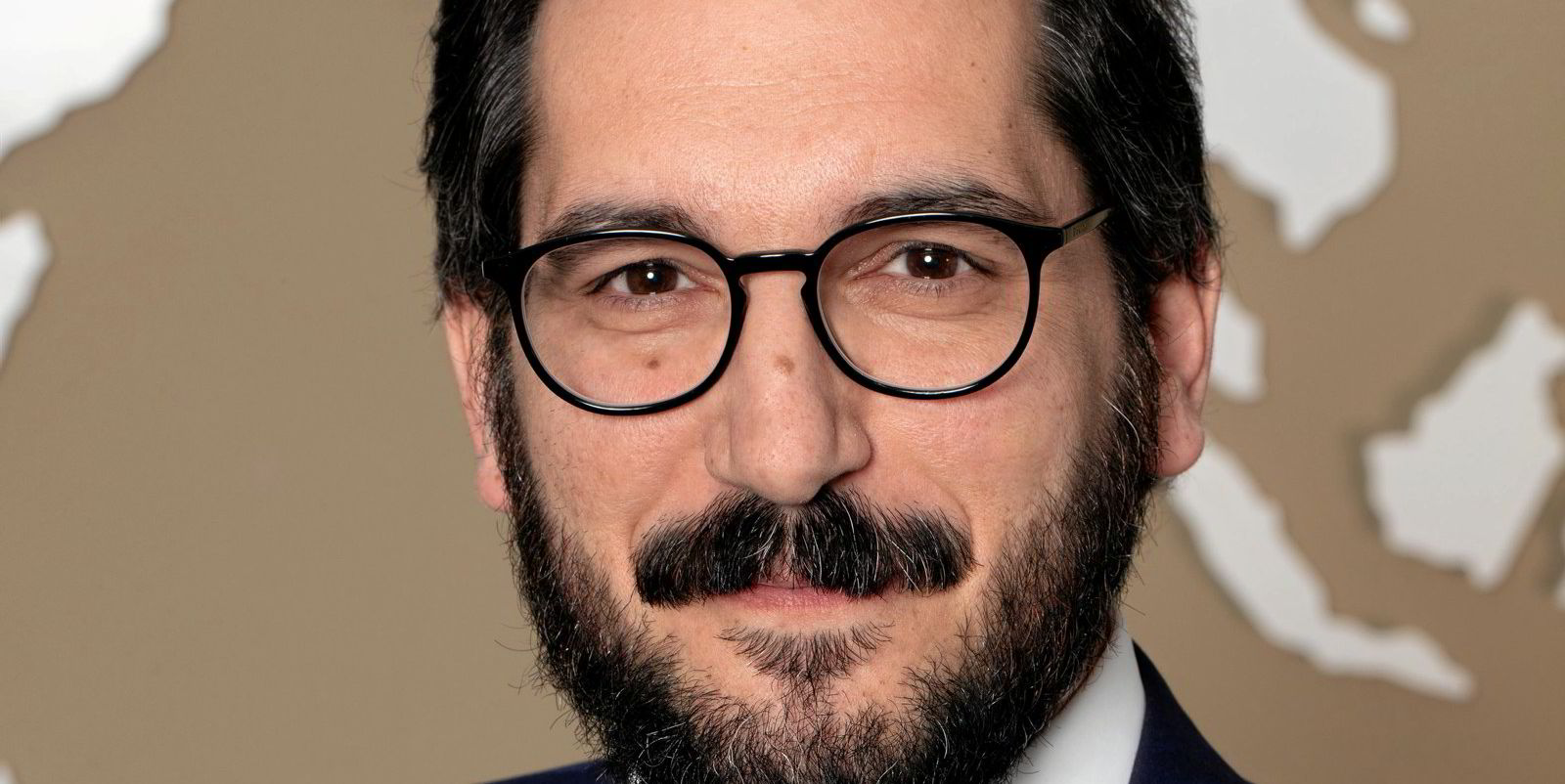
Cococcetta said WinGD’s approach to developing its ammonia product has been to talk to shipyards, engine builders, and classification societies from the very beginning so their feedback could be taken on board at the project development stage. The company has already been granted two approvals in principle from class for its engine.
“This is an innovation so we deal with ambiguities and risks but what we could do during this development is to mitigate those risks by having a very structured risk management approach,” he said.
Cococcetta said the most important thing is to apply this technology and test it in the field to make it robust and ready for the next vessel.
He said the company will gradually introduce its products. Once released and validated, there will be another vessel and engine, and WinGD can repeat the exercise, perhaps in a different context with other partners.
WinGD plans to run a single cylinder of its test engine at its Winterthur facility in Switzerland on ammonia from the end of May. Materials compatibility and safety are two of the main topics for testing, Cococcetta said.
The single-cylinder engine will be used to confirm and optimise the performance and emissions of the engine and test safety functions such as system purging. This will be followed with multi-cylinder testing.
Cococcetta said ammonia carriers, bulkers and small feeder vessels are proving natural first customers, but the company is also getting requests about tankers and car carriers.
Customers want to see if ammonia is viable, he said. “It is not just the availability of the technology but it has to be supported by the upstream production of ammonia in a low carbon way and the bunkering hubs.”
“It is an interesting moment for this potential fuel that needs to penetrate the market and many partners are needed,” Cococcetta said.
A bass guitarist in his spare time, he added: “It is like a concert — everyone needs to play together.”
At Wartsila, director of R&D Juha Kytola said discussions are proceeding “very positively” for the company’s new four-stroke ammonia engine.
Wartsila is also testing a 32-bore ammonia engine in Norway but has not yet brought this product to the market.
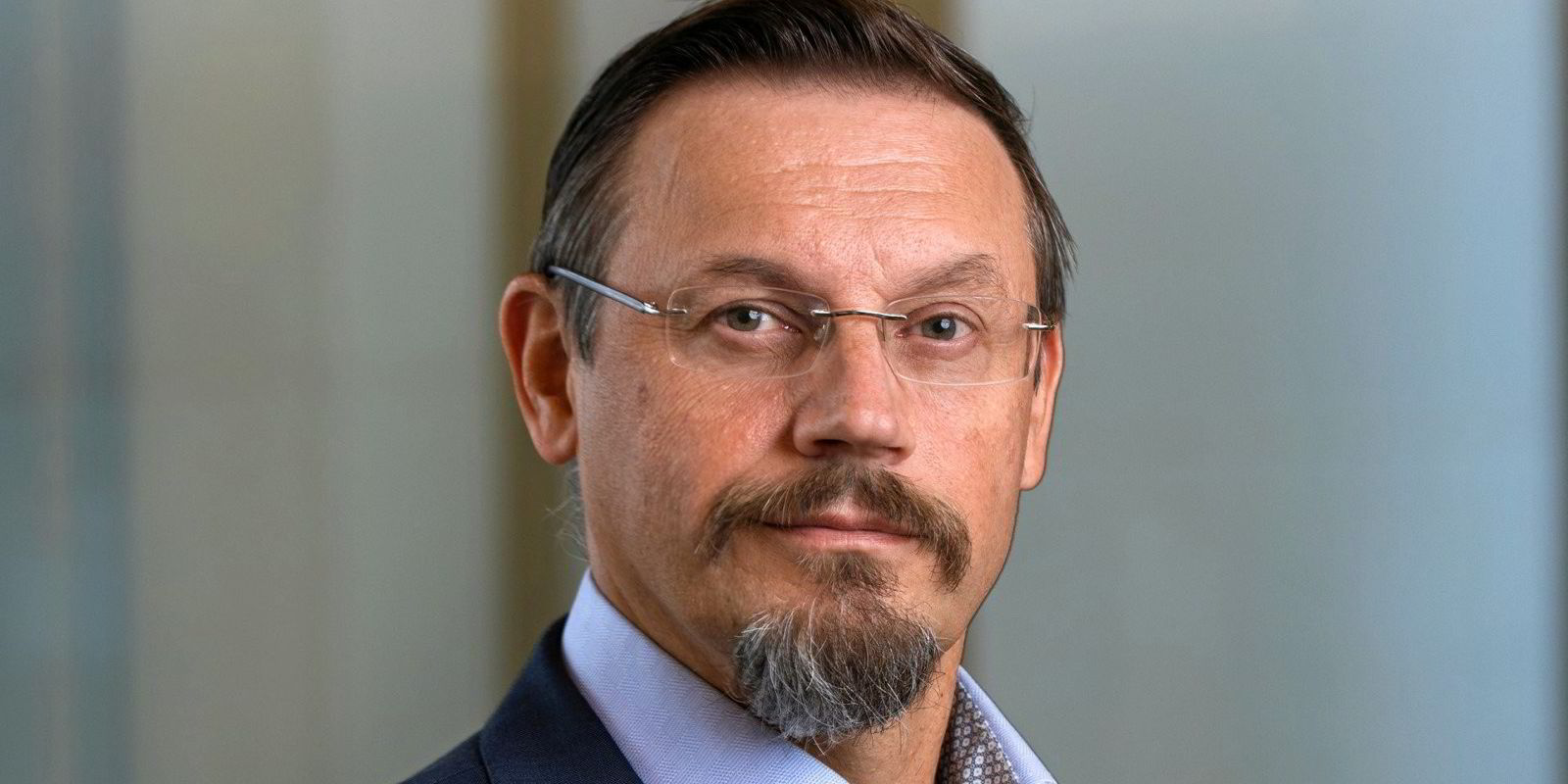
Kytola, who said the company has been running tests on other sizes of engines at its research and development centre in Vasa, Finland, revealed it is also looking closely at retrofits to get some quicker in-field experience.
While any retrofits would need to be agreed with potential customers on the basis that they would be a pilot delivery, Kytola said: “We have good discussions on this front ongoing.”
On a first newbuild of its new ammonia engine, Wartsila is waiting for pilot customer Viridis Bulk Carriers to firm up a letter of intent for the product. The company could be ready to manufacture and deliver the engine this year, Kytola said.
Wartsila is taking a modular approach to its four-stroke engine so it can be adapted to use different fuels, either liquid or gaseous including ammonia, although the latter option would require consideration of the ship’s layout from the start.
Curious get serious
Kytola said the first interest in its new ammonia engine was largely curiosity but this has progressed to more serious discussions relating to specific projects and ships, where these would operate, how to install systems and potential retrofits.
He said interest is focused on small coastal trading tankers and bulkers, and offshore vessels.
The R&D director said another grouping of potential customers is in “wait-and-see” mode as they are focused on passenger-carrying vessels and want to see the solutions for securing safe operations, bunkering and logistics.
He said customers’ questions tend to focus on the levels of decarbonisation that can be achieved. Wartsila’s message here is a 70% greenhouse gas reduction not just at the vessel level but across the entire well-to-wake lifecycle.
Other questions centre around safety measures and guarantees, the onboard space needed for ammonia — which requires about 3.9 times the storage capacity of conventional liquid fuels — and the availability of the new fuel for the maritime sector.
He said after curiosity and sometimes scepticism, customers can start to see that there are technical solutions.
Ammonia has been carried on board vessels for a long time, Kytola said, and there are ways to handle the logistics and bunkering.
